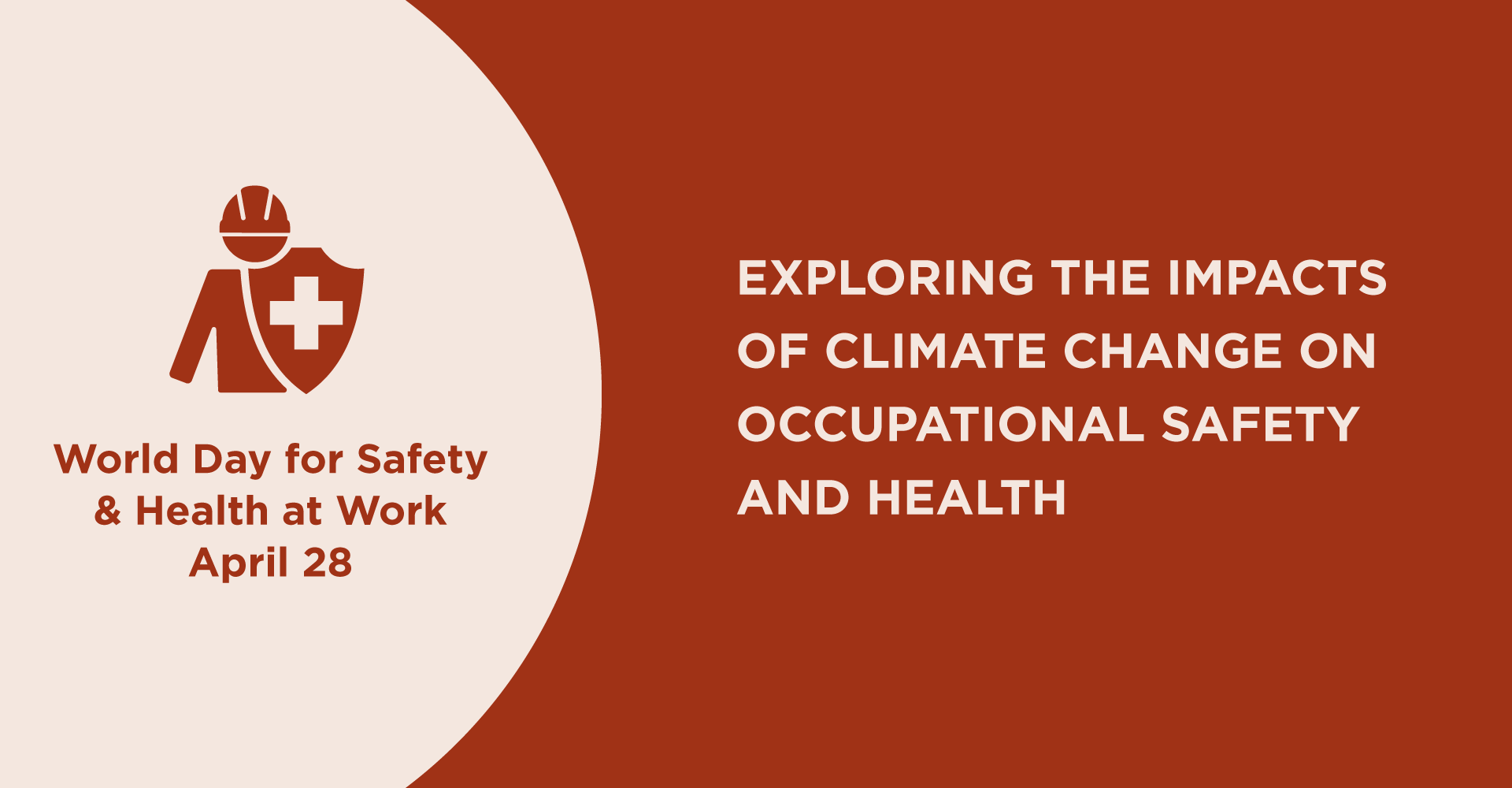|
This year's World Day for Safety and Health at Work theme is climate change's impact on occupational safety and health. It sheds light on the far-reaching consequences of environmental shifts in our workplaces.
Climate change is a significant concern today, affecting more than just the environment. As temperatures rise and extreme weather events become more frequent, it is essential to consider how these changes can impact the safety and health of workers, particularly in our industry. In this article, we will discuss how climate change can affect the safety and health of workers and ways to prevent these negative impacts.
Climate Change Risks to Occupational Safety and Health
1. Heat-Related Risks
One of the most direct impacts of climate change on workplaces is the increased risk of heat stress. Rising temperatures can cause workers to experience heat-related health risks, such as dehydration, heat exhaustion, and heat stroke. This poses a significant threat, especially for those working outdoors or in non-air-conditioned environments, such as construction and on-site workers. Employers must provide adequate rest breaks and access to water and ensure proper ventilation and cooling systems to mitigate the risk of heat stress.
2. Extreme Weather Events
The frequency and severity of extreme weather events, such as hurricanes, floods, and wildfires, have surged because of climate change. These events can disrupt work environments, leading to injuries, displacement, and long-term health implications for workers. Therefore, employers must have emergency response plans to ensure their employees' safety during such events. These plans may include evacuation procedures, training on emergency protocols, and providing personal protective equipment.
3. Air Quality Concerns
Climate change patterns can lead to poor air quality, raising the levels of pollutants and allergens. This can be especially harmful to on-site workers, as it can lead to respiratory issues and exacerbate pre-existing health conditions. In such situations, robust ventilation systems and regular health check-ups become imperative. For people working outdoors, employers should implement additional measures, such as providing masks to filter out pollutants and regularly monitoring and assessing the air quality levels in and around the workplace to ensure the safety and well-being of their employees. Educating workers on the significance of proper respiratory protection can also reduce the risk of poor air quality.
4. Vector-Borne Diseases
As the climate changes, the habitats of disease-carrying insects like mosquitoes and ticks expand, increasing the risk of vector-borne diseases. This shift exposes workers to new health threats. Employers can prevent the spread of these diseases by implementing effective pest control measures, providing workers with protective clothing and insect repellent, and holding awareness campaigns educating them about the risks and preventive measures.
Preventing climate-induced risks
Proactive measures can help mitigate the impact of climate change on occupational safety and health despite its formidable challenges.
1. Education and Training
Equip workers with the knowledge and skills to recognize and address climate-related risks in the workplace. To achieve this, employers should provide training programs that cover potential hazards, implement appropriate safety protocols, and prepare for climate-related emergencies. It is also essential for employers to keep their employees up-to-date with the latest research and guidelines on climate-related risks. By prioritizing education and training, employers can empower their workers to contribute to preventing and mitigating climate-induced risks in the workplace.
2. Adaptation Strategies
Implement climate-resilient practices to cope with the changing conditions, ensuring the safety and well-being of workers. Employers should develop emergency response plans that outline procedures for dealing with extreme weather events and other climate-related emergencies to protect employees and minimize potential disruptions to business operations.
3. Emergency Preparedness
Develop and regularly update emergency response plans that account for the increased frequency of extreme weather events. These plans should include measures to protect workers during heatwaves, floods, storms, and other climate-related emergencies. Training employees to respond to these events is also crucial to ensuring that necessary resources and equipment are readily available for emergencies.
4. Health Surveillance
Conduct regular health monitoring to detect and manage climate-induced health risks among workers. This can involve regular medical check-ups, screenings, and assessments to identify potential health issues related to climate-induced risks. Employers have a responsibility to provide access to healthcare professionals knowledgeable about the specific health risks associated with extreme weather events. Moreover, employers should establish protocols for reporting and addressing health concerns arising from climate-related emergencies.
The implications of climate change on occupational safety and health cannot be ignored, from increased heat stress to the spread of vector-borne diseases. Employers and policymakers need to prioritize adaptation and mitigation strategies to safeguard the well-being of workers in a changing climate. By promoting a culture of awareness, preparedness, and adaptation, we can navigate these challenges and create workplaces that prioritize every worker's well-being despite the changing climate.
|
